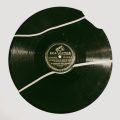Have you ever sat in your perch listening to your favorite records and all of a sudden wondered about the mortality of your records? You are not alone! I do not doubt that we have all, at some point, wondered just how long do vinyl records last.
Thus, today, we will be discussing the factors that come into play when considering the shelf life of our record collection. How and why is this not such an easy question to answer?
Table of Contents
- How Long Do Vinyl Records Last?
- Factors That Affect How Long Vinyl Records Last
- Fair Wear and Tear
- What Are Vinyl Records Made of?
- Tips for Longer Lasting Vinyl
- Final Tones
- FAQs How Long Do Vinyl Records Last?
How Long Do Vinyl Records Last?
Bottom line? There is no definitive answer to how long vinyl records last.
The lifespan of a vinyl record depends on several factors:
- Materials and thickness: The specific mixture of polyvinyl chloride and the thickness of the record (typically between 120g and 180g) can affect its durability.
- Production and printing: Variations in the production process and quality control at different pressing plants can impact a record’s longevity.
- Stylus and tonearm quality: The quality of the turntable’s stylus and tonearm, as well as the presence of a counterweight to adjust tracking force, can influence the wear on the record.
- User handling and care: How often the record is played and how well it is maintained by the user (e.g., cleaning) can significantly affect its lifespan.
Factors That Affect How Long Vinyl Records Last
As with all aspects of the vinyl record industry, the question of how long do vinyl records last is multi faceted and informed by a number of different factors, which we will here explore for your own research purposes, not least being the need to learn how to clean vinyl records.
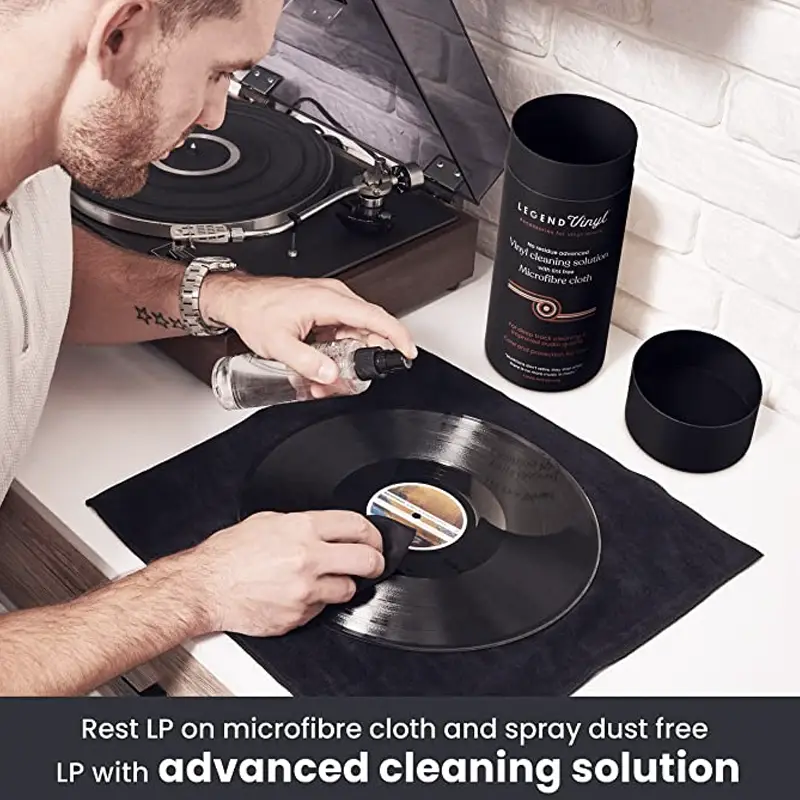
Stylus / Tone Arm
The stylus or tone arm that you are using can have a crucial effect on the sanctity of your records, the quality of the stylus and / or tone arm having a correspondent effect to the amount of wear that they imbibe onto the disc being played.
Cheaper record players setups, such as those manufactured by Crosley and the like, will come with tone arms and styluses that are cheaper and of apocryphal quality, often without the addition of a counterweight, which is a crucial tool to combat the wearing away of one’s records, allowing you to set the apposite pressure that the needle sits on and reads the grooves of the record.

Since it is the needle that does the eventual damage to a record disc, it stands to reason that having a tool that can control how much pressure this needle is applying to the surface of the disc can only be a good thing.
Likewise, you will want to make sure that the needle and the cartridge themselves are of a good enough quality that, in coming into regular contact with your record collection.
They are up to the task of treating your collection with the respect and love it deserves and that you yourself would wish upon it. If you have any doubts that the needle might not be in good contition you can proceed into changing your record player needle.
Any good record player or turntable worth its salt will allow you to change the needle cartridge, and many audiophiles would recommend you do this pronto, especially if you have laden yourself with the grief of a Crosley.
Production and Printing
Since each vinyl production plant will use slightly different methods and slightly different machinery to produce and print and manufacture a record, it is no wonder that there are varying answers to the question of how long do vinyl records last.
Methods and machinery ought to be the parts that can be standardised, at least to a certain extent! It is when humans are involved that things really get out of hand.
There is really no way to homogenise and account for the sheer amount of aleatoric flexing that occurs when humans are involved, so the fact that there will always be staff working at a pressing plant of varying skill levels will mean that the records are cared for in infinitely different ways, intricate depths of minutiae that is barely worth thinking about really.
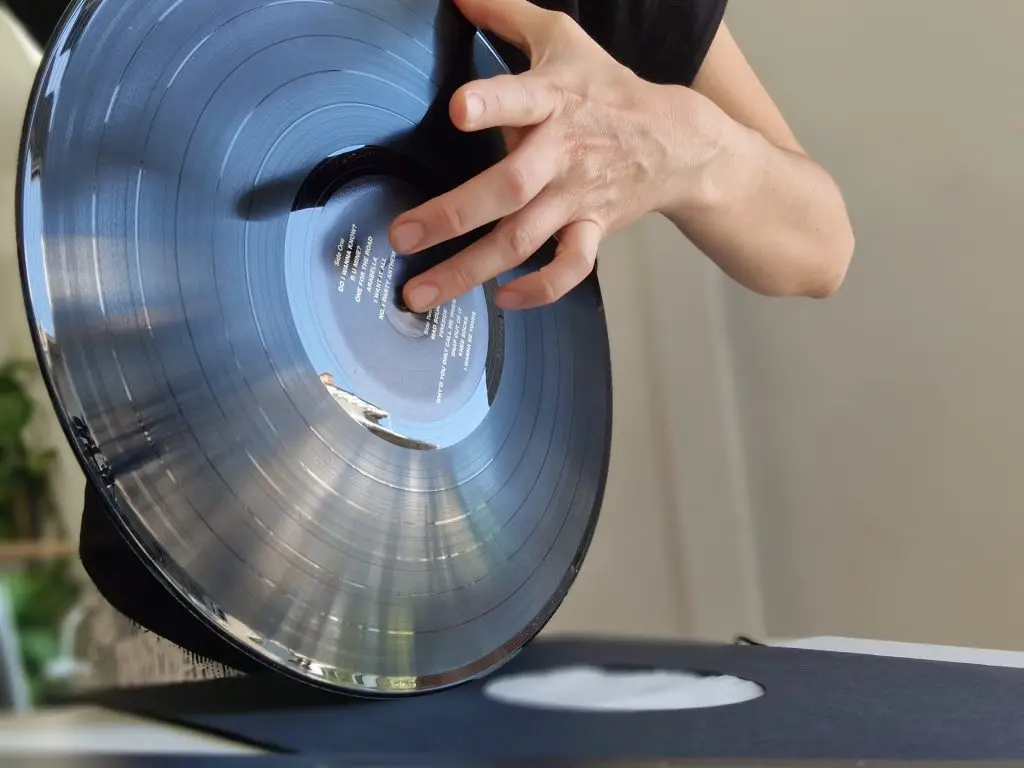
This is not even to consider the sheer amount these variations can multiply from pressing plant to pressing plant. This can be of particular relevance in this present moment, where record pressing plants are repeatedly hard pressed and over worked and backlogged with records from the past two years as a result of the coronavirus pandemic.
So, for whatever reason, there will undoubtedly be some pressing plants that spend longer on all of the relevant quality checks than some others, meaning that the answer to the question of how long do vinyl records last will always vary. Also, aboviously the vinyl pressing price will vary from plant to plant based on the above.
Materials and Thickness
It should go without question that the materials used in the production of a record have an effect on the overarching question of how long do vinyl records last. Sure enough, most records will be produced with a similar chemical foundation of polyvinyl chloride, but, as with the amount of human variation that can be involved in the process, the mixture too can vary considerably sometimes.
The most common instances of this occur when a record company reuses the mixture from older records to make new ones, effectively recycling the polyvinyl chloride used to make records that did not sell in their initial form.
Any resident audiophile will tell you that a recycled record like this will produce an inherently inferior record in terms of audio fidelity, though with the current rate of climate change this might be a worthy sacrifice.
More relevant to today, perhaps, is the way that record companies can also cut costs by pressing records to thinner discs, which will mean that the discs are bound to last a far shorter time than they might otherwise.
There was a particular trend of this in the 1980s when record companies were particularly hard pressed to make ends meet. What with the present vinyl boom, the standard seems to be somewhere between 120g and 180g of weight for each disc, though just how far this goes to changing the answer to the question of how long do vinyl records last is constantly up for debate and is a consistent point of contention for audiophiles everywhere.
Fair Wear and Tear
It should go without saying that the more you play a record, the more it will deteriorate. In contrast to physical formats like CDs, for example, there is a far more physical relationship between the format and that which reads the information imbibed within.
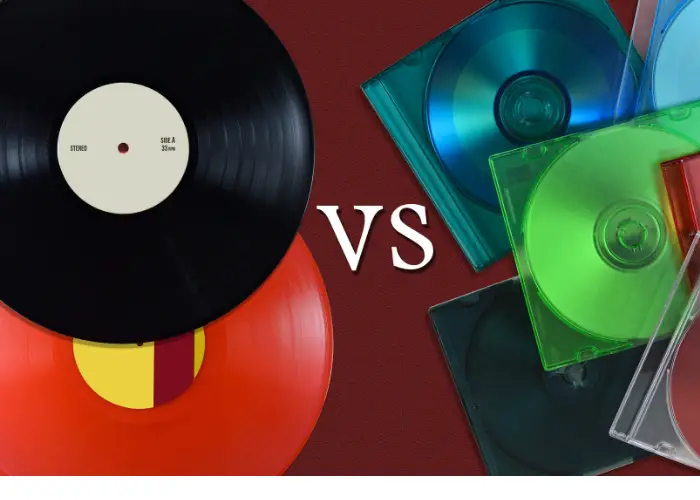
In the specific example of the vinyl record, a needle of a record player will need to physically scrape itself against the surface of the disc so that the data and vibrations can be translated from within the grooves and out through the adjoining speaker setup or headphones.
Thus, it should not be hard to see how, even over a relatively short period of time, your precious records could be played to mush. This was an altogether common occurrence back in the day when records were popular, when they were the go to medium for storing and spreading the good musical word.
My own parents have told me of times when they play a record so much that it would literally wear through the entire disc and onto the turntable platter! In a time with a far less saturated music industry and no sign of digital streaming platforms providing overwhelming choices at the click of a button, it is not hard to see how this could once have been the case.
No doubt the materials which records are manufactured from are of an even at least slightly better quality, but the point still stands, that records are finite and have a lifespan. Perfectly mimicking the typically more organic sound of the record format, the disc is alive and so can perish if mistreated or used too much. Sound familiar?
How long do vinyl records last? Seeing as all are made from slightly different materials and concoctions of polyvinyl chloride, it would be impossible to say, though the life span is very much in your hands.
What Are Vinyl Records Made of?
Vinyl records are made of polyvinyl chloride, which is best understood if we think of it as a combination of crude oil and chlorine, one of the reasons that the answer to the question of how long do vinyl records last is a lot longer than the original shellac records from days of yore.
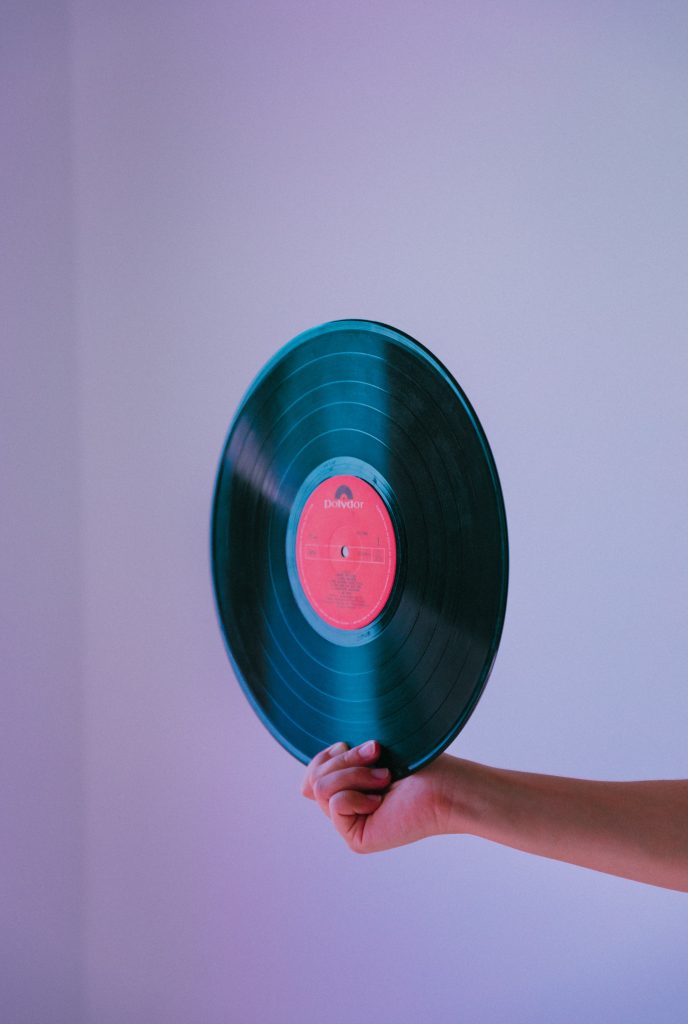
The substance might even be somewhat familiar. You might, for example, have come across it around the house, for a lot of plumbing hardware, as well as other related things, are made with the very same material, though it is more often in these situations referred to as PVC, which might now sound more familiar to you.
Polyvinyl chloride is originally more or less completely clear, providing space for some apposite opportunities for experimental color combinations in the production of vinyl.
You will likely have noticed, however, that the most common color for vinyl records is still black, almost certainly for financial reasons, ultimately saving record producers money during the process by using a cheaper color to most other alternatives, and especially in comparison to some of the bolder color combinations.
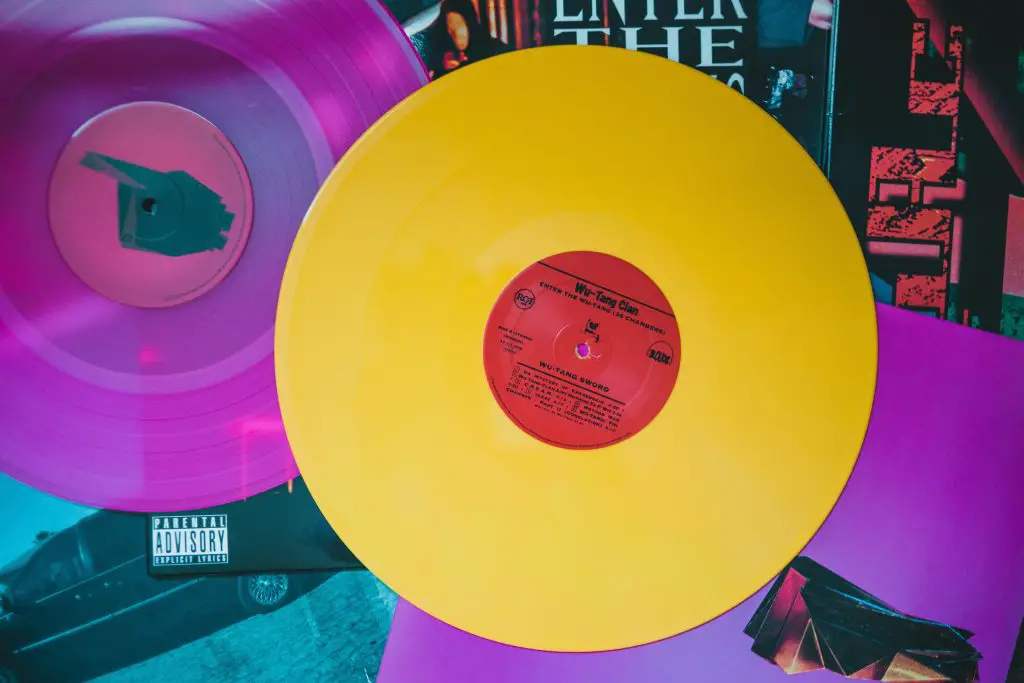
Of which there are essentially infinite possibilities and which you can find experimented with on releases past and present. In fact, you might have noticed yourself that it is common for reissues of older albums to feature colored discs, with the music pressed onto a color related to the cover of the album. Here are the main dimensions of the record covers.
I recently acquired a copy of the Twin Peaks soundtrack as performed and recorded by experimental pop band Xiu Xiu, wherein the two discs were a stark blue and red to mirror the two stark circles on both sides of the cover, likely a representation of the two opposed lodges within the show (if you know, you know).
Tips for Longer Lasting Vinyl
- Store records vertically to prevent warping and damage from the weight of other records.
- Avoid exposing records to direct sunlight and extreme temperatures. Keep them in a cool, dry place with a consistent temperature between 65°F and 70°F (18°C to 21°C) and a relative humidity of 45% to 50%.
- Use record storage cases or sturdy shelves to protect records from dust, dirt, and accidental damage.
- Handle records by the edges and label area to avoid fingerprints and smudges on the surface.
- Use a carbon fiber brush to gently remove dust and dirt before and after each play.
- Store records in their original sleeves or invest in high-quality inner and outer sleeves for added protection.
- Clean records regularly using a specialized record cleaning solution, microfiber cloths, and a carbon fiber brush. Consider investing in a record cleaning machine for deep cleaning.
- Keep the turntable stylus clean using a soft brush or specialized cleaning solution, and replace it if it shows signs of wear.
- Ensure the turntable is properly set up, leveled, and has the correct tracking force for the tonearm.
- Handle records carefully during playback, using the cueing lever to lower and lift the tonearm.
- Avoid manually stopping or starting the turntable, as it can cause the stylus to skate across the record surface.
- Perform regular maintenance on the turntable, including cleaning the stylus, checking the belt, and keeping the platter and tonearm dust-free.
Proper Storage Solutions
Protecting your vinyl collection is essential to ensure their longevity and maintain the best possible sound quality. Here are what I think the best practices for storing your precious records are, so you can enjoy them for years to come!
Vertical is the Way to Go
When it comes to storing your vinyl, vertical is the way to go! Stacking records horizontally might seem like a space-saving solution, but trust me, it’s a big no-no. The weight of the records on top can cause warping and damage to the ones below. Instead, always store your records vertically, like books on a shelf. This distributes the weight evenly and prevents any unwanted pressure on your beloved collection.
Avoid Direct Sunlight and Extreme Temperatures
Vinyl records are sensitive to both light and temperature. Direct sunlight can cause the covers to fade and the vinyl to warp, while extreme temperatures can lead to warping and even melting! To keep your records in top shape, store them in a cool, dry place away from direct sunlight. Aim for a consistent temperature between 65°F and 70°F (18°C to 21°C) and a relative humidity of 45% to 50%. If you live in an area with significant temperature fluctuations, consider investing in a climate-controlled storage solution.
The Perfect Home for Your Records
When it comes to storage options, you’ve got plenty of choices! Record storage cases are a popular pick among vinyl enthusiasts. These cases are designed to protect your records from dust, dirt, and accidental damage. They come in various sizes, so you can find one that fits your collection perfectly. Another option is to display your records on dedicated shelves. Just make sure the shelves are sturdy enough to support the weight of your collection and that they’re not exposed to direct sunlight.
A Few More Tips
Here are a few more tips to keep your vinyl in pristine condition:
- Always handle your records by the edges and the label area to avoid fingerprints and smudges on the surface.
- Use a carbon fiber brush to gently remove any dust or dirt before and after each play.
- Store your records in their original sleeves or invest in high-quality inner and outer sleeves for added protection.
Cleaning and Maintenance
Just like any other beloved possession, your records need a little TLC to keep them spinning smoothly and sounding their best.
Why Cleaning Your Records Matters
Every time you play a record, tiny dust particles and debris can settle into the grooves, leading to surface noise, skips, and even permanent damage. Over time, this buildup can significantly impact the sound quality and longevity of your vinyl. By regularly cleaning your records, you’ll ensure that you’re always hearing your music the way it was meant to be heard – crystal clear and full of depth.
The Essential Tools for Record Cleaning
To keep your vinyl in tip-top shape, you’ll need a few key tools in your cleaning arsenal:
- A carbon fiber brush: This handy tool is perfect for removing surface dust and static before and after each play. Gently brush the record in a circular motion, following the grooves.
- Record cleaning solution: Opt for a specialized record cleaning solution designed to safely remove dirt and grime without damaging the vinyl. Avoid using tap water or household cleaners, as they can leave behind residue or even harm your records.
- Microfiber cloths: Use a soft, lint-free microfiber cloth to apply the cleaning solution and wipe down your records. These cloths are gentle on the vinyl surface and won’t leave behind any fibers.
- A cleaning machine (optional): For the ultimate in vinyl care, consider investing in a record cleaning machine. These devices use a combination of cleaning solution, brushes, and vacuum suction to deep-clean your records, removing even the most stubborn dirt and debris.
A Step-by-Step Guide to Cleaning Your Records
- Start by removing any surface dust with your carbon fiber brush. Gently brush the record in a circular motion, following the grooves.
- Apply a small amount of record cleaning solution to your microfiber cloth. Be sure to follow the manufacturer’s instructions for the correct amount and application method.
- Using light pressure, gently wipe the record surface in a circular motion, following the grooves. Pay extra attention to any visible dirt or fingerprints.
- Use a clean, dry part of the microfiber cloth to wipe away any remaining cleaning solution, ensuring the record is completely dry before storing or playing.
- Repeat this process every few plays, or whenever you notice any buildup of dust or dirt.
Don’t Forget the Stylus!
In addition to cleaning your records, it’s crucial to keep your turntable’s stylus (needle) clean. A dirty or worn stylus can cause damage to your records and negatively impact sound quality. Use a soft brush or specialized stylus cleaning solution to gently remove any debris, and consider replacing your stylus if it shows signs of wear.
Playing Vinyl Records Properly
Now that your records are clean and stored safely, it’s time to talk about the art of playing them correctly. How you handle and play your vinyl can have a significant impact on its lifespan and the quality of your listening experience.
Setting Up Your Turntable
A properly set up turntable is crucial for getting the most out of your vinyl collection. Start by ensuring your turntable is level – use a spirit level to check and adjust the feet as needed. Next, check the tracking force of your tonearm. This is the amount of pressure the stylus (needle) puts on the record surface. Too little force can cause the stylus to skip, while too much can lead to excessive wear. Consult your turntable’s manual for the recommended tracking force range and use a precision scale to set it accurately.
The Importance of a Quality Stylus
Your turntable’s stylus is the unsung hero of your vinyl playback setup. A worn or damaged stylus can wreak havoc on your records, causing irreversible damage to the delicate grooves. Invest in a quality stylus from a reputable manufacturer and replace it as soon as you notice signs of wear, such as decreased sound quality or increased surface noise.
Handle with Care
Proper handling of your records during playback is just as important as storage and cleaning. Always handle your vinyl by the edges and the label area, avoiding touching the surface. When placing the record on the turntable platter, be gentle and precise. Lower the tonearm slowly onto the record surface, letting the cueing lever do the work.
Let It Spin
Once your record is playing, resist the urge to tinker. Avoid stopping or starting the turntable manually, as this can cause the stylus to skate across the record surface, potentially causing damage. If you need to pause playback, use the cueing lever to lift the tonearm before stopping the platter.
The Run-Out Groove Debate
You might have heard conflicting advice about what to do when your record reaches the end of a side – the “run-out groove.” Some argue that you should immediately lift the tonearm, while others say it’s fine to let it play through. The truth is, as long as your turntable has an automatic return or shut-off feature, it’s perfectly safe to let the record play through to the end. However, if you have a manual turntable, it’s best to lift the tonearm once the music ends to prevent unnecessary wear on the stylus and the run-out groove itself.
Regular Maintenance
To keep your turntable in top form, perform regular maintenance. Clean the stylus gently with a soft brush or specialized cleaning solution before and after each playback session. Check the belt for signs of wear or stretching, and replace it as needed. Keep your turntable dust-free by using a soft, lint-free cloth to wipe down the platter and tonearm.
- Clean and protect your vinyl collection — Our vinyl record cleaning kit is the simple and safe way to remove dirt, dust, grime and fingerprints from your records. The curved, non-scratching surface of our velvet record cleaner brush effectively lifts debris from the record grooves, so you can maximize your vinyl experience.
Prices pulled from the Amazon Product Advertising API on:
Product prices and availability are accurate as of the date/time indicated and are subject to change. Any price and availability information displayed on [relevant Amazon Site(s), as applicable] at the time of purchase will apply to the purchase of this product.
Final Tones
So, there you have it! Hopefully this collation of resources on the mortality of your record collection has been of some use, enabling you either to assess just how long your favorite records have in the grand scheme of things and / or allowing you to make some changes to the way you treat your records so that they can last that bit longer!
FAQs How Long Do Vinyl Records Last?
Do vinyl records get worn out?
Very much, yes, and this is a precise tenet to understanding the record format, and one of the main reasons that vinyl recording was left in the past in the first place. To work at all, the needle of the turntable needs to come into contact with the grooves of the record, an act of friction which can, over time, wear away the face of the record, not only degrading the overall fidelity of specific or whole parts of a record, but eventually even wearing through the entire disc and onto the other side if not careful.
How many times can you play a vinyl record before it wears out?
Unfortunately, there is no set amount of times that a vinyl record can be played before it is deemed unfit for the job anymore. This is for a number of factors, and it is precisely the sheer multitude of these factors that mean it is impossible to even give a rough estimate as to how many times a record is good to be played. Not only are the specific materials involved important to consider, as well as the fact that there is not much standardisation amongst thicknesses of record discs on the market, there is also the fact that a record’s lifespan is very much reliant on how it is treated by the user.
How long can vinyl records hold?
Though there are no real limits for the sizes and lengths of vinyl records, there are certain industry standards that are more or less adhered to across the board. If complied with, these industry standards mean that a standard 12 inch records that plays at 33 1 / 3 rpm will be able to hold around 23 minutes of music. By this same logic, a 7 inch record played at 45 rpm can hold around 4 minutes, though this extends to 6 minutes if the record is produced and printed to be played at 33 1 / 3 rpm.
What is the lifespan of vinyl?
Unfortunately, there is no set amount of times that a vinyl record can be played before it is deemed unfit for the job anymore. This is for a number of factors, and it is precisely the sheer multitude of these factors that mean it is impossible to even give a rough estimate as to how many times a record is good to be played. Not only are the specific materials involved important to consider, as well as the fact that there is not much standardisation amongst thicknesses of record discs on the market, there is also the fact that a record’s lifespan is very much reliant on how it is treated by the user.





